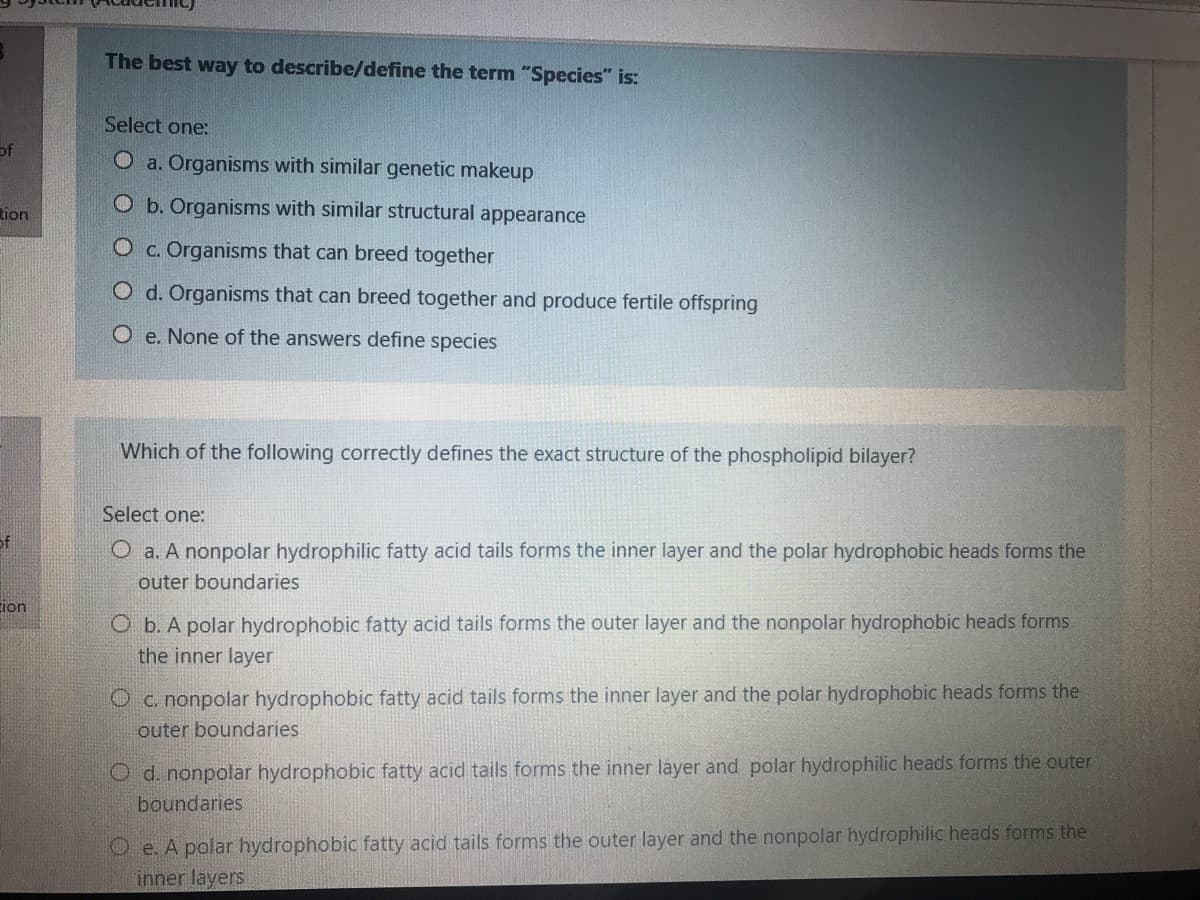The best way to describe/define the term "Species" is: Select one: O a. Organisms with similar genetic makeup O b. Organisms with similar structural appearance O c. Organisms that can breed together O d. Organisms that can breed together and produce fertile offspring O e. None of the answers define species Which of the following correctly defines the exact structure of the phospholipid bilayer? Select one: O a. A nonpolar hydrophilic fatty acid tails forms the inner layer and the polar hydrophobic heads forms the outer boundaries O b. A polar hydrophobic fatty acid tails forms the outer layer and the nonpolar hydrophobic heads forms the inner layer O c. nonpolar hydrophobic fatty acid tails forms the inner layer and the polar hydrophobic heads forms the outer boundaries O d. nonpolar hydrophobic fatty acid tails forms the inner layer and polar hydrophilic heads forms the outer boundaries O e. A polar hydrophobic fatty acid tails forms the outer layer and the nonpolar hydrophilic heads forms the inner layers
Nucleotides
It is an organic molecule made up of three basic components- a nitrogenous base, phosphate,and pentose sugar. The nucleotides are important for metabolic reactions andthe formation of DNA (deoxyribonucleic acid) and RNA (ribonucleic acid).
Nucleic Acids
Nucleic acids are essential biomolecules present in prokaryotic and eukaryotic cells and viruses. They carry the genetic information for the synthesis of proteins and cellular replication. The nucleic acids are of two types: deoxyribonucleic acid (DNA) and ribonucleic acid (RNA). The structure of all proteins and ultimately every biomolecule and cellular component is a product of information encoded in the sequence of nucleic acids. Parts of a DNA molecule containing the information needed to synthesize a protein or an RNA are genes. Nucleic acids can store and transmit genetic information from one generation to the next, fundamental to any life form.

Step by step
Solved in 3 steps




